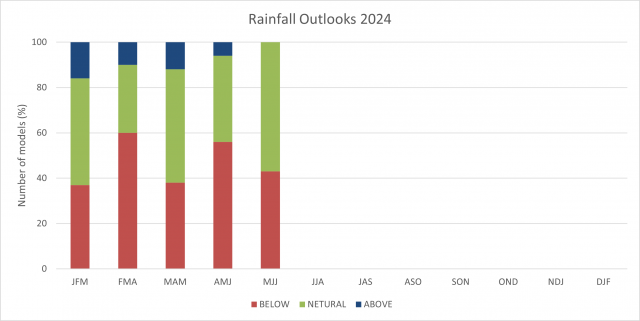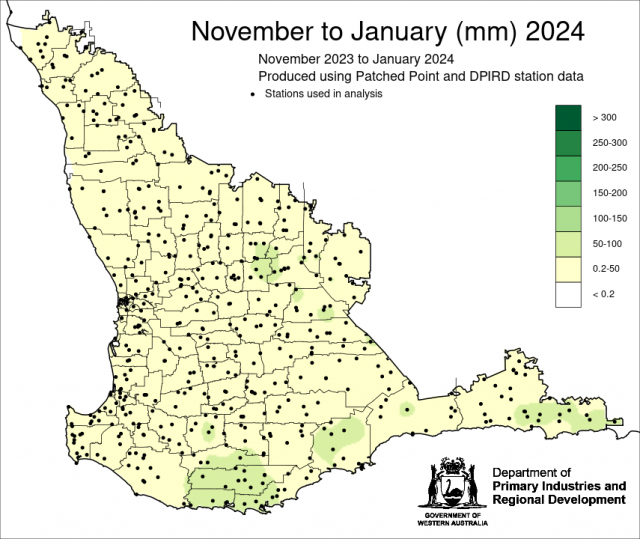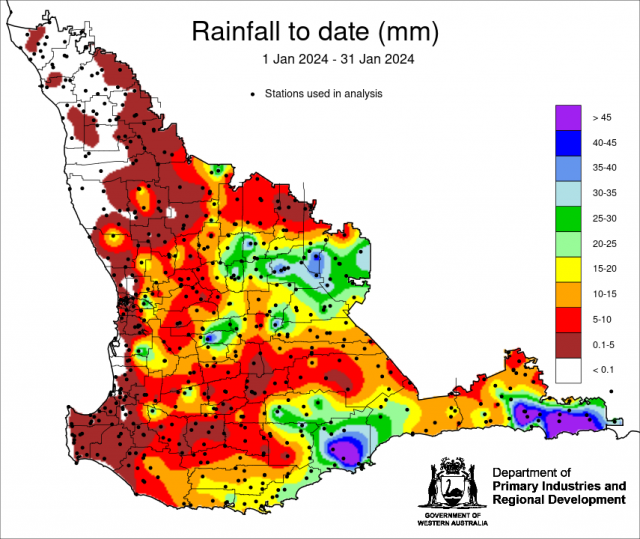Summary
The majority of national and international models indicate below median rainfall for the South West Land Division for February to April 2024.
Further ahead, the majority of models are indicating neutral chances (neither below or above median rainfall) for May to July 2024. Warmer temperatures than normal are expected to continue.
Things to consider:
- January rainfall was above average for some parts of the South West Land Division (SWLD), after a series of localised thunderstorms, so plant available soil water is variable.
- Bureau of Meteorology temperature outlook for February to April 2024 is for above average maximum and minimum temperatures (80% chance of exceeding median temperature).
- Above average mean sea level pressure south of Australia (high pressure system) has increased the easterly flow across the grainbelt, leading to stronger than normal easterly winds. These winds have been driving higher than normal temperatures.
- El Niño is continuing in the tropical Pacific Ocean, but is expected to decay by May.
- The positive Indian Ocean Dipole (IOD) event has weakened from the strong values seen in late 2023, and expected to return to neutral by the end of February.
- Early model predictions are for a neutral El Niño-Southern Oscillation (ENSO), neither El Niño or La Niña, by June 2024, but potentially a positive IOD developing in May.
Rainfall outlook for the South West Land Division
A summary of 20 national and international models show that 12 models indicate below median rainfall for the SWLD for February to April 2024.
Further ahead, the majority of models is indicating neutral chance of exceeding median rainfall (neither above or below median rainfall expected) for autumn, March to May 2024.
For the period April to June, the models are leaning toward drier conditions, but neutral for May to July. Remember, however, the further out the model forecasts, the least skill it has. Also, because of the ‘autumn predictability barrier’ climate models forecasting past autumn (March to May), have the lowest skill and should be viewed with caution.
Climate driver outlook
The Bureau of Meteorology’s survey of international models suggests ENSO to be at a neutral state in June.
Survey for the Indian Ocean Dipole is leaning toward a positive Indian Ocean Dipole. A positive IOD generally means drier winter-spring rainfall and warmer temperatures for the SWLD.
The last positive IOD was in 2019, which was a decile 2-3 growing season rainfall for the majority of the SWLD.
Remember, that we are currently in the ‘autumn predictability barrier’ for forecasts, which means models predicting past autumn must be viewed with caution as they have the lowest skill at this time of the year.
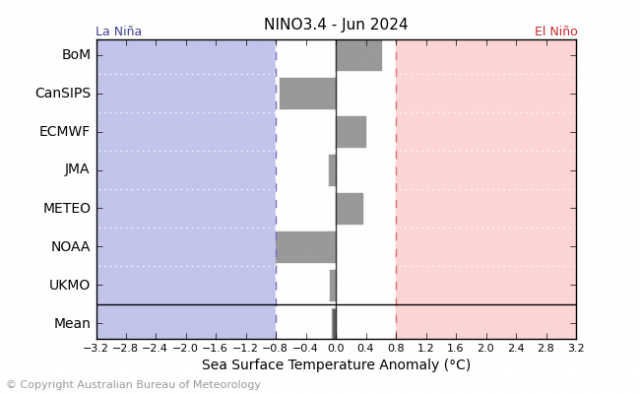
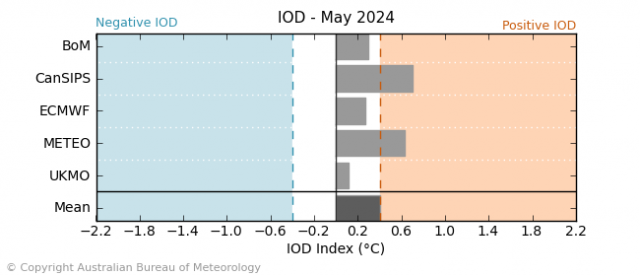
For information on climate drivers refer to the Bureau of Meteorology’s Climate Driver Update.
Recent climate
The November to January rainfall was below average for the majority of the South West Land Division. The highest amount was in Esperance with 111 mm.
January rainfall was above average for the majority of the South West Land Division, due to localised thunderstorms, with Esperance receiving 98 mm, decile 10 rainfall. Only the Central West has missed out on rain so far this year.

